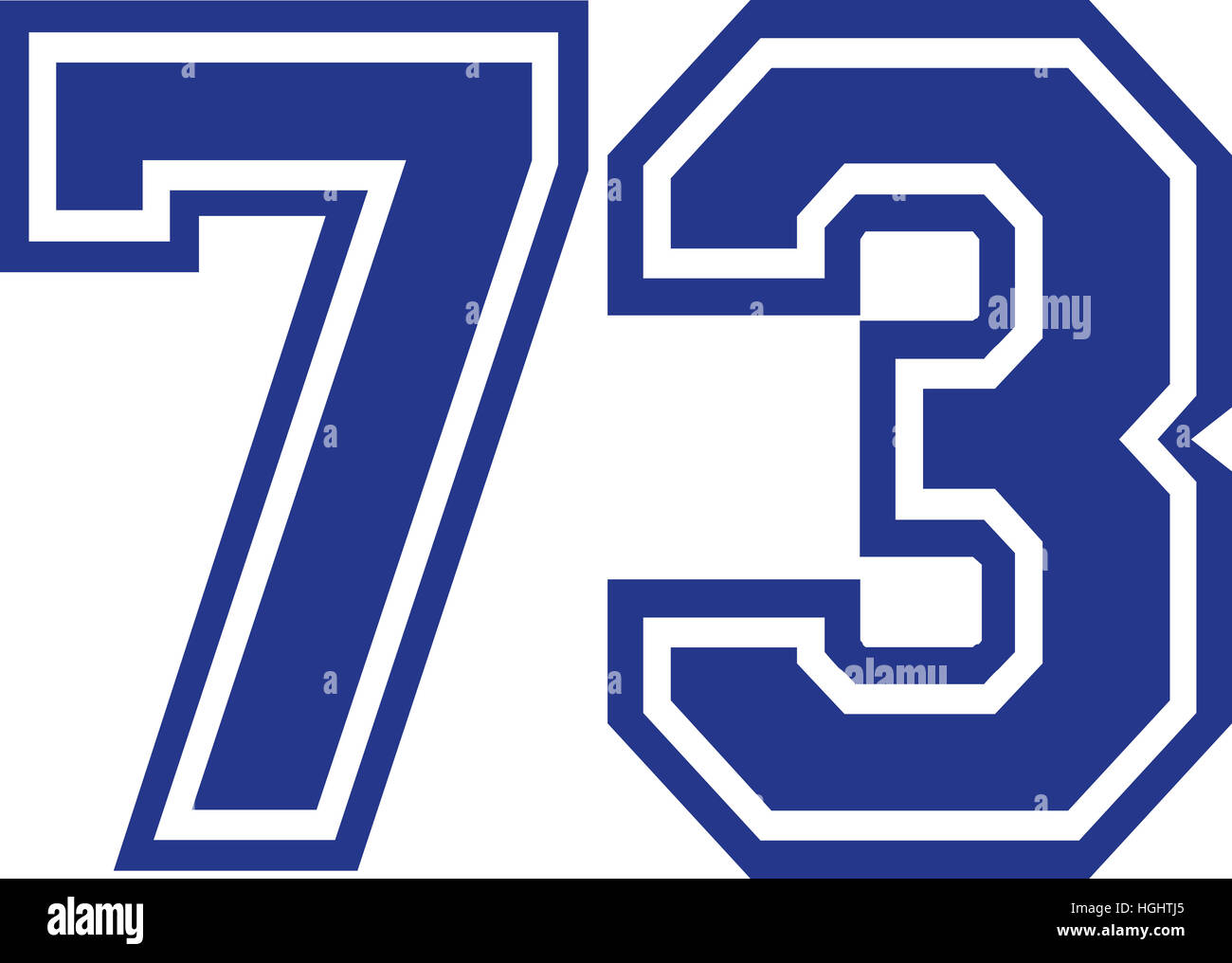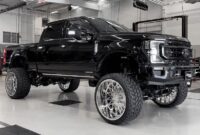73-79 Ford Trucks For Sale: Your Comprehensive Guide to Finding and Owning a Dentside Legend sale.truckstrend.com
The rumble of a big V8, the unmistakable lines of a robust body, and a history of unwavering utility – these are the hallmarks of the 1973-1979 Ford F-Series trucks, affectionately known by enthusiasts as "Dentsides." More than just vehicles, these trucks represent an era of American automotive manufacturing defined by durability, straightforward design, and a no-nonsense approach to getting the job done. Today, 73-79 Ford trucks for sale are highly sought after by collectors, restorers, and practical users alike, who appreciate their classic aesthetics, mechanical simplicity, and the sheer joy of owning a piece of automotive history.
Whether you’re looking for a dependable workhorse, a weekend cruiser, or a blank canvas for a custom build, the Dentside generation offers a wide array of options. This comprehensive guide aims to arm you with the knowledge needed to navigate the market, identify a gem, and embark on the rewarding journey of owning one of these iconic Ford pickups.
73-79 Ford Trucks For Sale: Your Comprehensive Guide to Finding and Owning a Dentside Legend
Why the 6th Gen F-Series? A Legacy of Toughness and Style
The sixth generation of the Ford F-Series, produced from 1973 to 1979, was a pivotal moment for the pickup truck. Ford refined its popular F-Series design, introducing a larger cab for improved comfort, a double-wall bed for increased durability, and a more squared-off, muscular aesthetic that has stood the test of time. The distinctive body lines, particularly the indentation running along the side of the body (giving rise to the "Dentside" nickname), coupled with the bold grilles, cemented their place as design icons.
Beyond their looks, these trucks were built for abuse. Their sturdy ladder frames, robust suspension components, and a diverse range of reliable powertrains made them legendary for their ability to handle heavy loads, rough terrain, and countless miles. From the nimble F-100 to the heavy-duty F-350, including the popular F-150 introduced in 1975 to circumvent emission regulations affecting the F-100, each model offered a unique blend of capability and utility. Their enduring appeal stems from this combination of rugged reliability, straightforward mechanics that are relatively easy to work on, and a distinctive style that evokes a sense of nostalgia and classic Americana.
Key Models and Configurations to Look For
When searching for 73-79 Ford trucks for sale, you’ll encounter a variety of models and configurations, each suited to different needs and budgets. Understanding these variations is crucial for making an informed decision:
- F-100/F-150: These are the light-duty workhorses, most commonly found and generally the most accessible in terms of price. The F-100 was phased out in favor of the F-150 towards the end of the generation, with the F-150 offering a higher Gross Vehicle Weight Rating (GVWR) that allowed it to bypass certain emission standards applied to lighter trucks. They are excellent for daily driving, light hauling, and custom builds.
- F-250/F-350: These are the heavy-duty trucks, designed for serious towing and hauling. They often feature larger engines, stronger axles, and more robust suspension systems. F-250s are a popular choice for those needing more capability than an F-150, while F-350s (often found in "dually" form) are the ultimate heavy-haulers of the era. These typically command higher prices, especially in good condition.
- Body Styles:
- Regular Cab: The most common configuration, offering seating for three.
- SuperCab: Introduced in 1974, this extended cab offered jump seats behind the front seats, providing limited extra passenger or storage space. These are less common and often command a premium.
- Crew Cab: The rarest and most sought-after body style, offering four full doors and seating for six. Crew cabs are highly desirable and significantly more expensive due to their scarcity.
- Bed Lengths: You’ll find both short beds (around 6.5 feet) and long beds (8 feet). Short beds are often preferred for aesthetics and maneuverability, while long beds offer maximum cargo capacity.
- 2WD vs. 4WD: Two-wheel drive (2WD) models are plentiful and generally more affordable. Four-wheel drive (4WD) models, especially F-250s and F-350s, are highly popular for their off-road capability and rugged appeal, and typically command significantly higher prices.
- Engine Options: The Dentside F-Series offered a wide range of gasoline engines:
- Inline-Six: The venerable 300 cubic inch (4.9L) I6 is legendary for its bulletproof reliability and torque.
- Small Block V8s: The 302 (5.0L) and 351W (Windsor) V8s offered a good balance of power and efficiency.
- Modified Cleveland/FE V8s: The 351M (Modified Cleveland) and 400 V8s were common, as were the older FE-series V8s (360, 390) in earlier models.
- Big Block V8s: The mighty 460 (7.5L) V8 was the king of power, offering immense torque for heavy-duty applications, though with a significant thirst for fuel.

What to Inspect When Buying a Dentside
A thorough inspection is paramount when considering 73-79 Ford trucks for sale. These vehicles are decades old, and even the most well-maintained examples will show signs of age.
- Rust: The Ultimate Enemy: This is by far the biggest concern. Check common rust-prone areas thoroughly:
- Cab: Rocker panels, cab corners, floorboards, cowl, around the windshield and rear window.
- Bed: Bed floor, inner and outer wheel wells, bed supports, tailgate.
- Frame: Inspect the entire frame for excessive surface rust, rot, or previous repairs. Pay attention to spring hangers and body mounts.
- Fenders/Doors: Bottoms of doors, front fenders behind the wheels.
- Underbody: Fuel tank supports, brake lines, exhaust components.
- Engine and Drivetrain:
- Cold Start: Listen for strange noises (knocks, ticks), excessive smoke (blue for oil, white for coolant, black for fuel).
- Leaks: Check for oil, transmission fluid, coolant, and power steering fluid leaks.
- Transmission: Test all gears, ensuring smooth shifts (automatic) or no grinding (manual). Check clutch engagement on manuals.
- 4WD System: If applicable, engage 4WD high and low. Listen for abnormal noises from the transfer case and front differential.
- Suspension and Steering:
- Bushings: Look for cracked or deteriorated bushings in leaf springs, control arms (if applicable), and sway bars.
- Shocks: Check for leaks or obvious wear.
- Steering: Check for excessive play in the steering wheel. Inspect tie rods, drag link, and ball joints.
- Brakes: Check the pedal feel (should be firm). Inspect brake lines for corrosion, and look at the condition of rotors/drums and pads/shoes if visible.
- Interior: Assess the condition of the seat upholstery, dashboard (cracks are common), headliner, and door panels. Test all gauges, lights, wipers, horn, heater, and defroster.
- Electrical: Ensure all lights (headlights, taillights, turn signals, brake lights), interior lights, and accessories work. Older wiring can be brittle.
- Documentation: Always request the title and verify the VIN. Ask for any available maintenance records or receipts for recent work.
Understanding the Market: Valuation and Pricing Factors
The price of 73-79 Ford trucks for sale can vary wildly, from a few thousand dollars for a project truck to tens of thousands for a show-quality restoration. Several factors influence valuation:
- Condition: This is the most significant factor.
- Project: Runs, but needs extensive bodywork, mechanical repairs, or a complete overhaul (typically $2,000 – $8,000).
- Fair: Runs and drives, but has significant flaws, rust, or needs major cosmetic work ($5,000 – $15,000).
- Good: Runs and drives well, minimal rust, presentable but not perfect paint and interior ($10,000 – $25,000).
- Excellent: Very clean, minimal flaws, well-maintained or older restoration ($20,000 – $40,000+).
- Concours/Show Quality: Flawless, professional restoration, factory correct or highly customized to a high standard ($40,000 – $80,000+).
- Rarity and Desirability: Crew cabs, SuperCabs, 4×4 models (especially F-250/F-350), and trucks with desirable engine/transmission combinations (e.g., 460 V8, manual transmission) command higher prices.
- Originality vs. Modification: Highly original, unmolested trucks can be more valuable to purists. However, well-executed modifications (e.g., engine swaps, modern suspension, EFI conversions) can also increase value if done correctly and tastefully.
- Geographic Location: Trucks from dry, arid climates (Southwest US) generally have far less rust and are thus more valuable than those from rust-belt regions.
- Documentation and Provenance: A clear title, service records, and a known history can add value and peace of mind.
Tips for a Successful Purchase and Ownership
- Do Your Research: Decide what specific model, cab style, and drivetrain best suits your needs before you start looking.
- Set a Realistic Budget: Factor in not just the purchase price, but also potential immediate repairs, ongoing maintenance, insurance, and any desired modifications or restorations.
- Inspect Thoroughly (or Hire an Expert): If you’re not mechanically inclined, pay for a pre-purchase inspection by a reputable classic car mechanic. This small investment can save you thousands.
- Test Drive Extensively: Drive at various speeds, on different road surfaces, and test all functions. Listen for unusual noises, feel for vibrations, and check steering and braking response.
- Don’t Rush: The right truck will come along. Be patient and don’t feel pressured into a purchase.
- Negotiate: Most classic car prices are negotiable. Be prepared to walk away if the price isn’t right.
- Plan for Post-Purchase Maintenance: Even a well-maintained Dentside will benefit from fresh fluids, new filters, and a general tune-up after purchase.
- Join the Community: Online forums, Facebook groups, and local classic truck clubs are invaluable resources for parts, advice, and camaraderie.
Common Challenges and Solutions
Owning a Dentside is a rewarding experience, but it’s not without its challenges.
- Rust Repair: This is the most common and often most expensive issue. Solutions range from DIY patch panels (available from aftermarket suppliers) to professional body shop work for extensive rot. Sourcing rust-free donor parts from dry climates is also an option.
- Parts Availability: For common mechanical components (engine parts, brakes, suspension), parts are generally readily available from auto parts stores and online retailers. Trim pieces, specific interior components, and some body panels can be harder to find, often requiring searches on online marketplaces, junkyards, or specialized classic Ford truck suppliers. The aftermarket support for Dentsides is strong.
- Fuel Economy: These trucks were built in an era of cheap fuel. Expect single-digit to low-teen MPG figures, especially with V8s and 4WD. Solutions include careful tuning, ensuring the engine runs efficiently, considering an overdrive transmission swap, or even an EFI (Electronic Fuel Injection) conversion for significant improvements.
- Modernizing for Daily Use: While durable, older trucks lack modern comforts and safety features. Upgrades like power steering, disc brake conversions (if not already equipped), air conditioning, better lighting, and upgraded sound systems are popular and relatively straightforward.
- Finding a Reputable Seller: Be wary of vague descriptions or sellers unwilling to provide detailed photos or allow inspections. Reputable classic car dealers, specialist classic truck classifieds, and enthusiast forums are often good places to find well-cared-for examples.
73-79 Ford Trucks For Sale: Estimated Price Guide
Please note: These prices are estimates and can vary significantly based on specific model, engine, transmission, options, location, market demand, and the seller’s urgency. Always conduct thorough research and inspection.
| Model / Configuration | Condition: Project ($) | Condition: Fair ($) | Condition: Good ($) | Condition: Excellent ($) | Condition: Concours ($) |
|---|---|---|---|---|---|
| F-100/F-150 2WD Reg Cab | 2,000 – 6,000 | 5,000 – 12,000 | 10,000 – 20,000 | 18,000 – 30,000 | 30,000 – 50,000+ |
| F-100/F-150 4WD Reg Cab | 4,000 – 9,000 | 8,000 – 18,000 | 15,000 – 30,000 | 25,000 – 45,000 | 45,000 – 70,000+ |
| F-250 2WD Reg Cab | 2,500 – 7,000 | 6,000 – 14,000 | 12,000 – 25,000 | 20,000 – 35,000 | 35,000 – 60,000+ |
| F-250 4WD Reg Cab | 5,000 – 12,000 | 10,000 – 25,000 | 20,000 – 40,000 | 35,000 – 60,000 | 60,000 – 90,000+ |
| F-350 2WD Reg Cab | 3,000 – 8,000 | 7,000 – 15,000 | 14,000 – 28,000 | 25,000 – 40,000 | 40,000 – 70,000+ |
| F-350 4WD Reg Cab | 6,000 – 15,000 | 12,000 – 30,000 | 25,000 – 50,000 | 40,000 – 75,000 | 75,000 – 100,000+ |
| SuperCab (Any Drivetrain) | Add 1,000 – 5,000 | Add 2,000 – 8,000 | Add 3,000 – 10,000 | Add 5,000 – 15,000 | Add 10,000 – 20,000+ |
| Crew Cab (Any Drivetrain) | Add 3,000 – 10,000 | Add 5,000 – 20,000 | Add 10,000 – 30,000 | Add 15,000 – 40,000 | Add 20,000 – 50,000+ |
Frequently Asked Questions (FAQ) about 73-79 Ford Trucks
Q1: What makes the 73-79 Ford F-Series trucks special?
A1: Known as "Dentsides," they are cherished for their rugged durability, iconic styling, mechanical simplicity (making them relatively easy to maintain), and the wide range of available configurations. They represent a golden age of American pickup truck design.
Q2: Are parts readily available for these trucks?
A2: Yes, generally. Common mechanical and wear-and-tear parts are widely available from local auto parts stores and online retailers. For specific body panels, trim pieces, and unique interior components, the aftermarket industry and online enthusiast communities offer a strong supply, but some rarer items may require more searching.
Q3: What’s the fuel economy like for Dentside trucks?
A3: Fuel economy is generally poor by modern standards, typically ranging from single digits to low teens (MPG). The larger V8 engines, especially with 4WD, will be the thirstiest. Owners often perform modifications like EFI conversions or overdrive transmission swaps to improve efficiency.
Q4: Can a 73-79 Ford truck be a reliable daily driver?
A4: Absolutely, with proper maintenance and potentially some modern upgrades. Many Dentside owners use their trucks as daily drivers. A well-maintained engine and drivetrain, good brakes, and a solid electrical system are key. You might consider adding modern amenities like A/C, improved lighting, and better seating for comfort.
Q5: What’s the main difference between an F-100 and an F-150 in this generation?
A5: The F-150 was introduced in 1975 primarily to bypass emission regulations that applied to trucks under 6,000 lbs GVWR (Gross Vehicle Weight Rating), which included the F-100. The F-150 typically had a GVWR over 6,000 lbs, making it slightly heavier-duty than the F-100, though they often looked identical. The F-100 was phased out towards the end of the generation.
Q6: Are 4×4 Dentside trucks significantly more expensive than 2WD?
A6: Yes, 4×4 models generally command a significant premium over their 2WD counterparts, especially for F-250 and F-350 variants. Their added capability, rugged appeal, and relative scarcity contribute to higher prices.
Q7: What are the most common issues to look out for when buying?
A7: Rust is the biggest concern, particularly in cab corners, rocker panels, floorboards, and bed areas. Other common issues include worn suspension components, oil leaks, and electrical gremlins due to aging wiring. A thorough pre-purchase inspection is highly recommended.
Conclusion
The 1973-1979 Ford F-Series trucks stand as a testament to American engineering and design – robust, stylish, and endlessly capable. For those seeking 73-79 Ford trucks for sale, the market offers a diverse landscape, from untouched barn finds to meticulously restored masterpieces. The journey of finding, acquiring, and owning a Dentside is more than just a transaction; it’s an entry into a passionate community and a commitment to preserving a tangible piece of automotive history.
With careful research, a thorough inspection, and a clear understanding of the market, you can find the perfect Dentside to fulfill your automotive dreams. Whether it’s a trusty work truck, a weekend showstopper, or a platform for your custom vision, these classic Fords promise a rewarding experience that transcends mere transportation, offering a unique blend of nostalgia, utility, and undeniable cool. Embark on your search today, and join the ranks of those who appreciate the enduring legacy of the Dentside legend.



